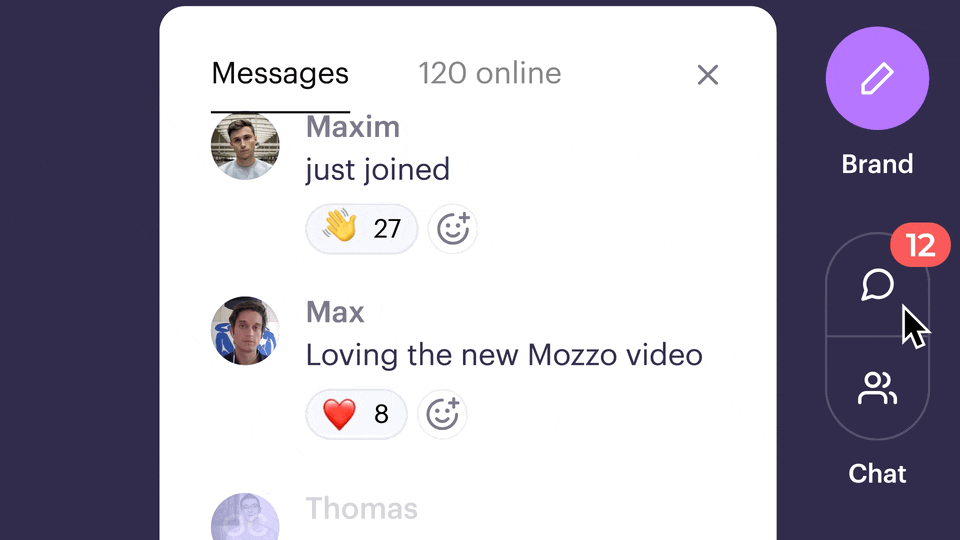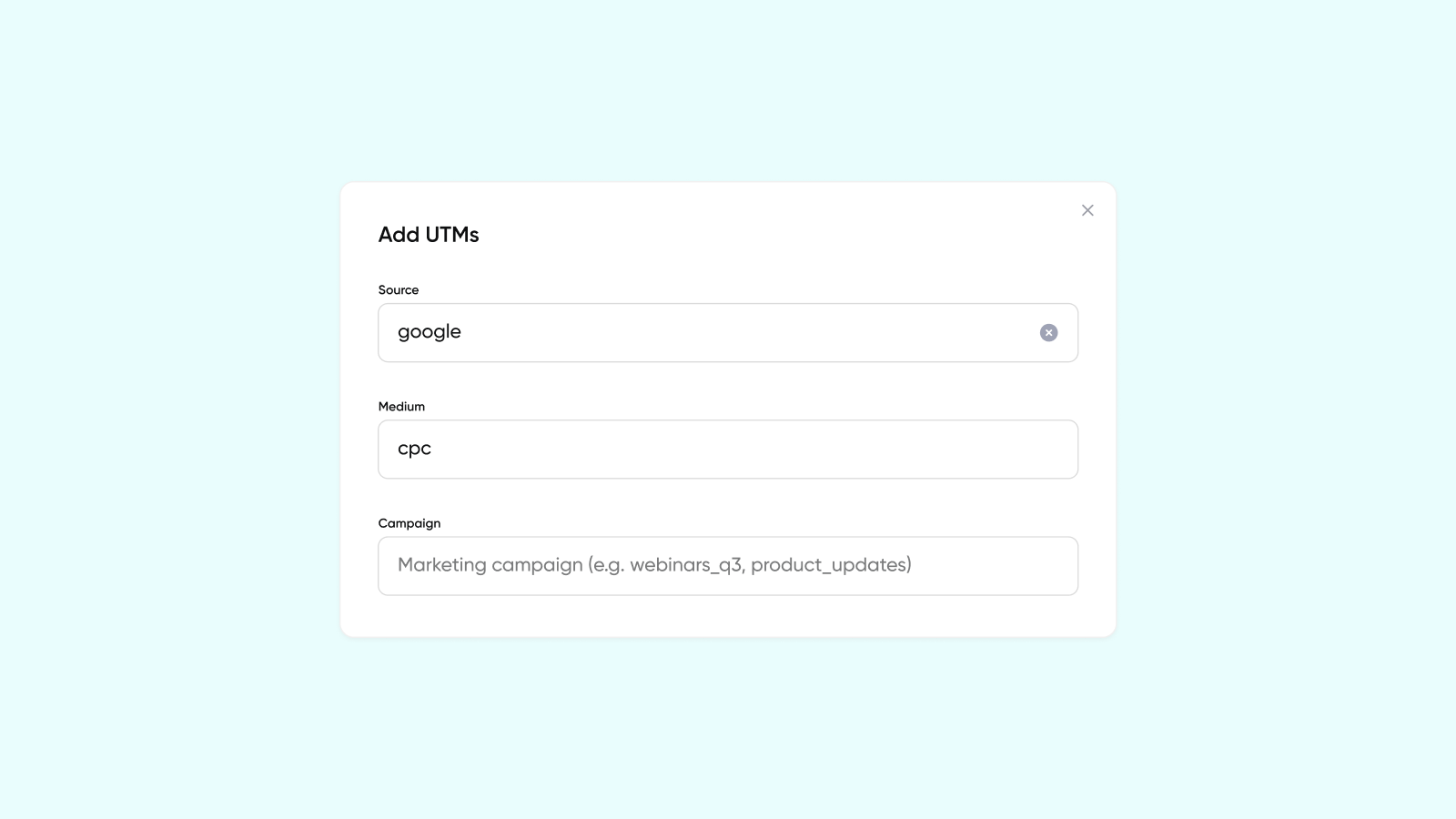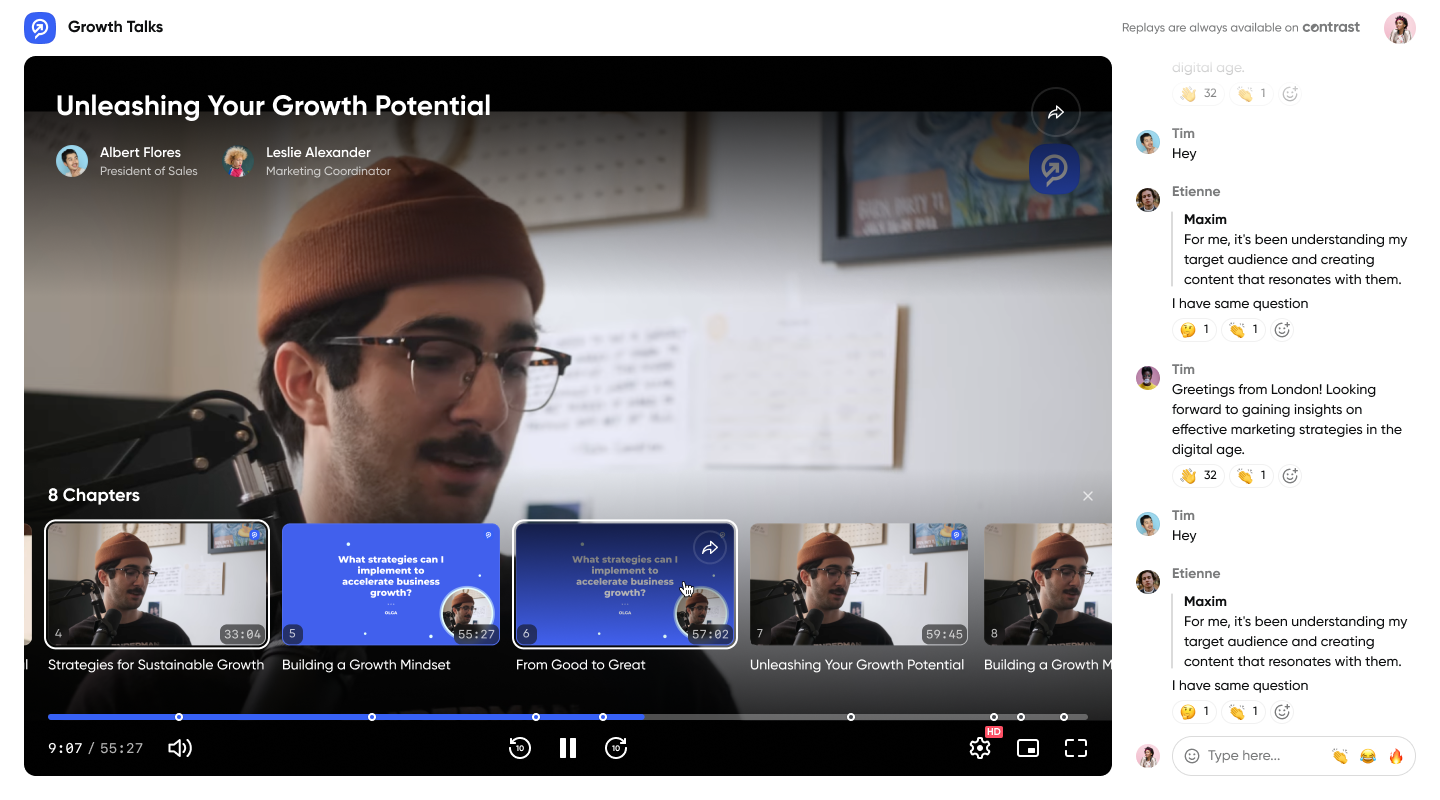Introduction
Imagine building a skyscraper. Now, hold that thought!
Hosting your first webinar can be as intricate as constructing a hundred-story building. The preparation stage for both needs a blueprint, a strategic process and careful attention to every minute detail.
Startling comparison, isn't it?
But here's where it gets better... You don't have to be a master architect or a seasoned engineer to host a successful webinar. In fact, with these 50+ crucial tips, you could carve out your path to hosting a remarkable webinar in 2024, akin to constructing that skyscraper, brick by brick, floor by floor, all the way to the top, reaching new, untapped heights and audiences.
In the mindset of crafting the perfect webinar? Buckle up! There's half a century of wisdom. Navigate this towering challenge with ease. It's not rocket science - it can be mastered!
Understanding Webinars
Webinars have been a powerful tool since their inception. They continue to evolve, with particular relevance extending into 2024.
Definition and Purpose of a Webinar
A webinar, short for web-based seminar, is a live, interactive session conducted online. It hosts an unlimited number of participants from different locations, providing a venue for presentations, discussions, and demonstrations. Webinar platforms enable real-time interactions between the host and participants, carrying functions like live chats, polls, and question-answer sessions. The primary purpose of webinars is to educate, train, demonstrate, or promote products or services.

The Evolution of Webinars Over the Years
When webinars first made their appearance in the 1990s, they were largely utilised for academic and research purposes. The ability to reach a broader audience without geographical limitations was revolutionary. As technology and internet accessibility advanced, so did webinars. By the early 2000s, companies began to harness the power of webinars for marketing, sales and training.
Technological advancements (and especially newer and more modern webinar tools like Contrast) have transformed webinars from a simple video streaming tool to a fully interactive platforfm for engagement. They've evolved to greater adaptability, offering hybrid options combining both live and recorded elements, with improved functionality for attendee participation.
The Relevance of Webinars in 2024
In 2024, webinars remain a vital tool for businesses. The post-pandemic world has seen a surge in remote work, making webinars more relevant than ever. From marketing campaigns to product demos, webinars are now a staple in every industry. They offer a means of maintaining robust engagement with customers, employees, or prospects remotely.


Run the Most Modern Webinars in Your Industry
Start for free up 30 registrants. No credit card needed.
Start for freeBenefits of Webinars
Webinars are ideal for enhancing reach, engagement, cost-effectiveness, and convenience.
Reach and Engagement
Webinars stretch beyond the physical reach, allowing businesses to connect with a global audience. Unlike a physical meeting or seminar, webinars have the ability to host thousands of participants at the same time. This broadens the audience scope, providing wider visibility and brand exposure.
Beyond reach, webinars offer an ideal platform for strong engagement. With features like live chat and polls, webinars enable active interactions that create a two-way conversation. This heightened engagement fosters a better connection with the audience, enhancing brand loyalty and trust.
Cost-Effectiveness
Organising physical meetings or seminars can be costly and time-intensive, accounting for factors such as event location, travel, accommodation and material production. Webinars eliminate these costs, proving to be a highly cost-effective method for delivering content. The money saved can be re-invested into creating high-quality webinar content, enhancing audience appeal.
Flexibility and Convenience
Webinars provide unparalleled flexibility and convenience for both hosts and participants. With virtual platforms, participants can adjust their viewing experience based on their preferences and needs, whether it's watching a webinar live, rewinding a section they missed, or pausing to take notes. Also, the ability to attend a webinar from any place with internet connection liberates participants from physical constraints, making it exceedingly convenient.
For hosts, the convenience extends to having full control over the webinar's structure and running time, unrestricted by venue availability. The ability to pre-record segments also enables better management of the event's flow and timing.
Pre-Webinar Planning
- Solid pre-webinar planning aids in delivering a successful, high-quality webinar.
- It's not just about scheduling and promoting, it involves setting clear objectives, topic selection, webinar funnel, and choosing the right webinar tools.
- This process maximizes engagement, ensures you're delivering valuable content to the right audience, and provides a smooth webinar experience.
Importance of Pre-webinar Planning
Running a successful webinar isn't just about turning up on the day and presenting. It's about painstakingly planning every detail, from understanding your audience's needs to rehearsing your delivery. This attention to detail creates a polished, professional impression on your webinar attendees. Planning allows for a smooth delivery, higher engagement, and ultimately, the achievement of set goals.
Steps Involved in Pre-webinar Planning
The steps involved in pre-webinar planning should be systematic and meticulous. First, define the purpose of your webinar and identify your target audience. From there, set clearly measurable goals. These will help guide all other planning steps.
Once these base elements are in place, select a topic that is of interest and value to your target audience. It should be relevant, timely, and ideally, unique. Next, make sure you choose the right webinar tools that fit both your technical requirements and budget.
Setting Clear Objectives
Objective setting is an essential first step in planning a successful webinar. Without clear objectives, webinars lack focus and fail to engage attendees.
Defining the Purpose of the Webinar
The purpose of the webinar may vary from educating your audience on a specific topic, promoting a product or service, or simply creating a platform for thought leadership. It's crucial that this purpose is clearly defined, as it will guide the selection of topics, speakers, and promotion strategies.
Looking for ideas for your webinar? Check our 11 webinar ideas that work in 2024.
Identifying Target Audience
Your webinar content should be relevant and valuable to your target audience. By conducting a customer persona analysis, you can tailor your webinar content to meet the needs and interests of your audience, thereby encouraging higher engagement.
Setting Measurable Goals
Your webinar goals should be measurable, achievable, and tied to your overall business objectives. Whether it’s lead generation, customer education, or brand awareness, clear and measurable goals provide guidance throughout the planning process and a clear benchmark for determining webinar success.
Choosing the Right Topic
The key to a successful webinar lies in choosing the right topic. It can be a determining factor in attracting audience interest and engagement.
Importance of Topic Selection
Choosing a topic that resonates with your audience eases marketing efforts and boosts webinar attendance. Keep the topic focused, relevant, and in line with your audience's expectations.
Tips for Choosing a Relevant and Engaging Topic
Consider industry trends, challenges, and opportunities when choosing your topic. Your webinar should offer unique insights or practical advice that your audience can't find elsewhere. Ask for suggestions or conduct surveys to find out what your audience wants to learn.
Selecting the Right Webinar Tools
Reliable and feature-rich webinar tools are crucial for delivering a seamless webinar experience to both the presenter and attendees.
Overview of Popular Webinar Tools in 2024
There are numerous quality webinar tools available, each with its unique set of features. Depending on your needs and budget, the best webinar tool will be different for you. You might need the simplest tool possible, sacrificing on quality and viewer experience, like Zoom — or you might want to invest more in creating a modern experience for your viewers with tools like Contrast.
Factors to Consider When Choosing a Webinar Tool
When choosing a webinar tool, factors such as ease of use, reliability, video & audio quality, interactive features, and analytics capabilities should be considered. Remember, the best tool is not the most expensive one, but the one that suits your needs best.
Small business looking to run webinars? Check out our 6 best webinar platforms for small businesses.
Designing the Webinar
TL;DR: To make your webinars engaging and effective, pay attention to the design, create appealing content, plan a solid structure, and prepare your speakers well.
Importance of Webinar Design
Design is a key player in communicating your message effectively. A well-designed webinar not only draws in your audience but also sustains their interest. Now imagine a cluttered presentation or an audio that is barely audible. No one is going to stick around for that. An undervalued aspect, webinar design can either derail your presentation or act as a silent facilitator that glides your audience through the session.
Want to make sure you have the best audio possible for your webinars? We compiled a list of the best microphones depending on your budget.
Elements of a Well-Designed Webinar
A good webinar design is simple and clean. Opt for clear fonts, impactful visuals, and maintain consistency throughout the webinar. Make sure the presentation is easy to follow; viewers should not have to squint their eyes or strain their ears. Multimedia elements, when added in moderation, can bring a presentation to life. However, avoid overloading your slides to prevent your audience from feeling overwhelmed.
It's also key to have an optimized webinar landing page and copy to optimize the amount of registrants to your webinar.
The time and day you choose for your webinar can also impact the registration and turn-out rates. There's no perfect time but pick it based on what makes the most sense for your target audience.
Creating Engaging Content
Tips for Creating Engaging Webinar Content
Every webinar is an opportunity to deliver value to your audience. One way to ensure this is by creating compelling content. Start by understanding your audience - their needs, interests, and expectations. Focus on actionable insights, and back up your points with reliable data. Keep your content concise and intersperse it with interactive elements like polls, quizzes, or Q&As to keep the audience engaged.

Importance of Visuals and Interactive Elements
Ground-breaking insights can easily get lost in a sea of text. That's where visuals come into play. Charts, infographics, images - employ them to simplify complex information and make your content more digestible. Interactive elements add a dynamic element to your webinar. They not only engage your audience but also provide immediate feedback about your session.
Planning the Webinar Structure
Typical Structure of a Webinar
An optimal webinar structure usually begins with a brief introduction followed by the main content. We interviewed a webinar expert on how to Grab your audience's attention and turned it into... a webinar! It then concludes with a question-and-answer session, to address attendees' queries. Some also incorporate a poll towards the end to gather instant feedback.
Tips for Planning an Effective Webinar Structure
While there's no one-size-fits-all structure, an effective one is deliberate and well-balanced. It draws the audience in, delivers value, and then wraps up neatly without rushing or dragging on. However, don't let a structure handcuff your creativity. Feel free to experiment and improvise based on your audience and goals.
Preparing the Speakers
Role of the Speaker in a Webinar
Much like an orchestra conductor, the speaker sets the rhythm of the webinar. A good speaker not only delivers information but also manages to hold the audience’s attention, engage them, and even inspire them. Apart from knowing their subject matter inside out, they need to understand webinar mechanics and manage audience interaction.
Tips for Preparing Speakers for the Webinar
Give your speakers the tools to succeed. This could include a detailed briefing on the audience, assistance with content preparation, and technical checks ahead of the webinar. Also, rehearse the session and provide feedback to the speakers to help them improve. Remember, a confident speaker translates to a successful webinar. So, invest time in preparing them thoroughly.
Wondering which format to choose? Read our tips on moderating a panel discussion.
Promoting the Webinar
- Learn why promoting your webinar effectively is crucial
- Gain awareness of the effective strategies to market your webinar
- Discover how social media and email marketing can enhance your webinar outreach
Importance of Webinar Promotion
Planning a webinar is a daunting task, and creating high-quality content is undoubtedly essential - but what good is a well-designed webinar if it reaches no one? The importance of adequate webinar promotion can't be overstated.
It's important to note that your webinar title is key. It'll be the first thing people see and will heavily impact how many of them decide to go and sign up.
When you allocate time to intelligent promotion strategies, you magnify the potential of your event. Moreover, you attract a wider audience, boosting interaction and adding more diversity to your spectator pool. Notability is gained, brand recognition is increased and valuable information reaches spectators more efficiently, hence taking advantage of the webinar's full potential.
Effective Strategies for Webinar Promotion
Once you grasp the importance of promotion, it's time to act strategically for optimal results. Timing matters. Start your marketing campaign at least a few weeks in advance for people to schedule their time. Understand your target audience, tailor content to their needs, and reach them where they are mostly present. Collaborations can work wonders too. Co-hosting with someone in your field can pool audiences together. The use of enticing visuals, catchy headlines and crafty CTA's (Call-to-action's) are also beneficial in engaging potential spectators' interest.
Leveraging Social Media
Social media, with its enormous user base, proves to be an efficient platform for promoting your webinar. Role of social media in webinar promotion is significant. It enables you to connect directly with your target audience and keep them updated with real-time information about your event.
A one-size-fits-all approach doesn't work here. Each social media platform has its unique functions and user behaviors. Study these behaviors to tailor content that resonates with them. Engage with your audience. This could mean going live on Instagram or hosting a Q&A session on Twitter.

Email Marketing for Webinar Promotion
Despite the growing popularity of social media, emails remain unbeaten in terms of marketing. Email marketing for webinar promotion can drive high-response rates if executed correctly. Personalize your emails. A person is more likely to read something that speaks directly to them.
Crafting an effective webinar invitation email can drive a lot of signups. A good subject line to boost your email open rates. Give enough information regarding the webinar - why it is beneficial for them, the date, time, and the link to register. Always follow up with more emails. Even if they already registered, keep them excited with tidbits about what to expect or behind the scenes.
UTM tracking for your webinars
To understand which of your channels is working the best to drive registrants, it's key to use UTM tracking. Most webinar tools (including Contrast) have UTM builders that make it easy to create and manage links with UTMs.

Hosting the Webinar
One can’t emphasize enough the importance of seamless webinar hosting. Your role as a host defines the audience's experience, their engagement and their takeaway from the session.
- Uncover what variables need your attention when hosting a webinar
- Learn how to create an error-free webinar hosting experience
Key Considerations When Hosting a Webinar
To create an ideal webinar scenario, you need to carefully contemplate various aspects. As a host, the webinar’s success highly depends on you and your management skills. You are the nucleus around which the webinar revolves.
For one, always be prepared to adapt. You may have a detailed script, but unpredictable situations are a part of live sessions. Be ready to improvise, keeping the conversation natural and engaging.
Scheduling is another crucial factor. The time and day of the webinar can significantly impact attendance rates. Choosing a suitable time slot, typically when your audience is less busy, can increase engagement levels.
Lastly, a host must ensure effective communication. Clear and concise communication before, during, and after the webinar forges a relationship with the audience and boosts participation.
Tips for Smooth Webinar Hosting Experience
Managing a webinar is a task that requires patience, expertise, and careful planning. Successful webinar hosts all have their secret recipes. Here are a few tips:
Begin by choosing the best webinar platform that suits your needs in terms of features and pricing. A platform with interactive features such as polls and chatbots can keep the audience engaged. Crisp and clear audio is another non-negotiable feature. A platform that ensures an echo-free experience can significantly enhance the content’s comprehensibility.
Practice, Practice, Practice. It can boost your confidence and helps you identify any potential technical issues. Moreover, it aids in nailing the webinar presentation timing.
Lastly, have a co-host or technical support on board to manage unexpected technical glitches or answer attendee’s questions.

Hos the Most Modern Webinars in Your Industry
Start for free up to 30 registrants. No credit card needed.
Start for freeManaging Technical Aspects
The common saying of Murphy's law, "Anything that can go wrong, will go wrong," is incredibly relevant to webinar hosting. One must assume that somewhere along the journey, technical issues will arise.
Common Technical Issues During Webinars
Some common hassles webinar hosts face include unsteady internet connections, software compatibility issues, poor video quality, and audio disturbances. These disturbances distract attendees, affecting their learning experience and overall impression of your brand.
Tips for Managing Technical Aspects of a Webinar
The key to managing technical aspects lies in comprehensive testing before the webinar to identify and rectify potential technical glitches. Using trustworthy, high-quality equipment minimizes technical trouble. Have a back-up ready for crucial equipment like your mic or camera - this reduces the panic associated with device breakdowns.
Don't forget to test your camera and microphone with your speaker before going live.
In case of an unavoidable technical glitch, ensure open and honest communication with your attendees. They will appreciate your transparency and patience.
Engaging the Audience
Audience engagement is a crucial component of any successful webinar. It’s not just about delivering content, but making sure your audience resonates with that content and actively participates throughout the session.
Importance of Audience Engagement During a Webinar
Engagement determines an attendee's investment in your presentation. A highly-engaged audience suggests they’re absorbing your content, making them more likely to implement your insights. It also paves the way for attendees to become potential customers or partners.

Strategies for Keeping the Audience Engaged
To keep your audience engaged from beginning to end, make the session interactive. Include question-and-answer sessions, polls, and quizzes that encourage active participation.
Another strategy is to deliver the content in an appealing way. Storytelling, for instance, is a powerful tool that garners attention and facilitates better understanding.
Light humor can also be sprinkled throughout to keep the session enjoyable and engaging. Hosting a webinar need not be a stiff and formal occurrence, so feel comfortable to bring your unique spark to the table.
Remember, in order to deliver a successful webinar, detailed planning, precise execution, and continuous engagement and communication with the audience is necessary. Now with a solid foundation built, you're ready to get started.
Post-Webinar Activities
- Bolster webinar effectiveness with post-webinar actions.
- Improve future webinars and foster a stronger connection with attendees.
- From gathering feedback to crafting follow-ups, make every interaction count.
Leaning back into your chair as your webinar concludes, remember, your work is far from over yet. If hosting a webinar is act one of a compelling play, post-webinar activities are the equally important second act, where threads are tied, further connections are fostered, and lessons are extracted for future performances. It’s time to pivot your sole focus from delivering your material and towards making the most out of the experience you just orchestrated.
Importance of post-webinar activities
Like the encore to a music concert, post-webinar activities allow you to consolidate your message, build deeper relations with your audience, and extract key lessons to up your game in subsequent webinars. It's not just about the core event but everything that follows; it’s a two-way street where values, ideas, and connections continue to flourish.
Key post-webinar activities to consider
The conclusion of your webinar does not denote the cessation of interaction. Pivotal activities to engage in involve gathering feedback and follow-ups. These form a riveting feedback loop, allowing you to dissect your performance, discover avenues for improvement, and nurture audience relations for continued business growth.
Gathering feedback
You can only improve what you manage to measure. Gathering feedback is a critical pulse check, telling you how your webinar was received, what worked well, and what areas need enhancement.
Importance of feedback in webinar improvement
Feedback is the compass guiding you towards a better webinar experience. Without it, you could be completely oblivious of your performance anechoic points or areas needing improvements. Embrace it as the ultimate reality check, nudging you towards faster evolution and continuous betterment.
Tips for gathering and analyzing webinar feedback mailine.swildens
All feedback is not created equal. Sourcing useful, actionable feedback takes strategy. Optimize your feedback forms; keep them short, simple, yet comprehensive. Use a mix of multiple-choice, rating-scale, and open-ended questions. Encourage responses by sending out the feedback form sooner rather than later when the experience is still fresh in the audience's minds.
Follow-up Strategies
After the curtain falls, staying connected is crucial. Your follow-ups transform one-time attendees into loyal, long-term associates.
Importance of follow-up after a webinar
A well-executed follow-up not only keeps you top of mind but acknowledges and appreciates participant's time and effort. It reveals you as a brand that values connections beyond the transactional layer, pivotal for building lasting relationships.
Effective follow-up strategies
Your follow-ups should be timely and targeted. Personalize them based on attendee actions during the webinar. Share relevant resources and supplementary information. Catch their attention with catchy subject lines and respect their preferences. Remember, the key to a successful follow-up is relevance, timeliness, and respect for the recipient's time and inbox.
Closing Thoughts on Mastering the Art of Webinars
Let's quickly jog your memory on what we discussed. We explored everything from pre-webinar planning, perfecting your presentation, engaging your audience, to analyzing the end results. All these facets are critical to preparing and executing an impressive webinar in 2024.
Remember, these tips make you a more informed webinar host. They're designed to help you fully express your ideas, engage your audience meaningfully, and to gain the most return on your time and effort.
As we close, consider each of these recommendations as you get ready for your next webinar. Twist and apply these tips based on your own context and audience. They can serve as your secret ingredients to a successful webinar.
So, after reading this, what do you think is the most impactful aspect of a webinar you need to improve? Can't wait to hear your thoughts.
As you move forward, remember one thing - online engagement is a journey. So, let's step into 2024 with confidence, and make every webinar a massive hit!

The Most Modern Webinar Platform
Start for free up to 30 registrants. No credit card needed.
Start for free